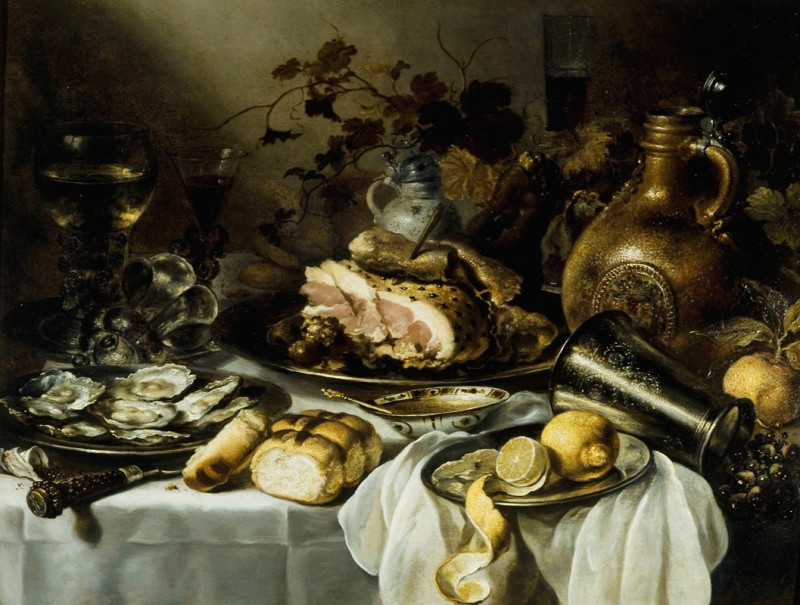Vanitas Still Life (1630)
Technique: Giclée quality print
Recommended by our customers
More about this artwork
Pieter Claesz's "Vanitas Still Life" (1630) is a striking and contemplative work that embodies the artistic and philosophical movement of Vanitas. Within this painting, Claesz masterfully captures the transient essence of human existence through its visually engaging and symbolic elements.At the center, a human skull, a common motif in Vanitas artworks, stares outward, serving as a poignant memento mori—a reminder of the inevitability of death. The skull's textured details and shadowy eye sockets draw the viewer into a reflective state on the fleeting nature of life.Flanking the skull, an overturned glass roemer—a type of drinking glass—suggests the sudden cessation of life, its transparency and fragility mirroring human vulnerability. Next to it lies an oil lamp with its extinguished flame, symbolizing the extinguishing of life, further emphasizing the theme of mortality.Adding layers to this contemplation on life and its vanities, Claesz includes objects like books and manuscripts, hinting at the pursuits of knowledge and the arts, which, while noble, also succumb to the ultimate fate shared by all earthly endeavors. These items, rich in detail and texture, are reminders of the intellectual accomplishments humans strive for, yet they too are transient.The inclusion of a pocket watch, partially obscured, speaks to the relentless march of time, which waits for no one. The rich drapery, with folds that capture and play with light, adds a textural depth to the painting, enhancing the overall melancholy and reflective mood."Vanitas Still Life" is a masterful exploration of the philosophical theme of vanitas. Through its composition, Claesz not only showcases his artistic prowess but challenges viewers to reflect on the impermanence of life, the futility of earthly pleasures, and the inevitability of death.
Delivery
Returns
Pieter Claesz was a Dutch Golden Age painter of still lifes.
He was born in Berchem, Belgium, near Antwerp, where he became a member of the Guild of St. Luke in 1620. He moved to Haarlem in 1620, where his son, the landscape painter Nicolaes Pieterszoon Berchem was born (October 1). He and Willem Claeszoon Heda, who also worked in Haarlem, were the most important exponents of the "ontbijt" or dinner piece.






























